

In the 1960s a dreadful blight came over church architecture. The liturgical world looked different after Vatican Two, and mystery and tradition were out in favour of transparency and forward-lookingness. However on a local level 'modernity' often seemed entail spindly, cheap fittings and ugliness. I don't, as a rule, like it, as well as having my severe doubts about the theology that underlay it; or at least the attitude, as theology was thin on the ground.
St Barnabas, Iford, was built in 1968 - I don't know who was responsible as it never came onto Pevsner's radar - and does look it. Few styles have dated quite as dramatically and radically as the brick-and-glass shopping-centre modernism of that time, and the building, which once represented the forefront of church planning, now appears rather quaint, especially on the approach along Mount Pleasant Drive. It also feels a bit tired as forty years of sun and rain have had their effect on the materials.
And yet there's something about St Barnabas which wins my undying affection. It makes a stab at drama, producing something not unworthy of a building in which the sacraments of Christ's Kingdom are supposed to be celebrated. And it has the unparalleled benefit of its site. It sits on the edge of a steep bluff overlooking the Stour valley on the north side of Bournemouth, and on that side the snaking suburban streets dramatically drop away, giving a view that goes on for miles. The fact that the upper part of the church is almost completely glass gives the sense that the building is penetrated and permeated by the world beyond: it is not a structure simply dumped in its landscape, but the landscape moves around and through it. Inside, you can never forget what lies outside. I know of no other church in which that new mood of openness and optimism that seemed abroad in Western Christianity in the '60s is so successfully expressed.
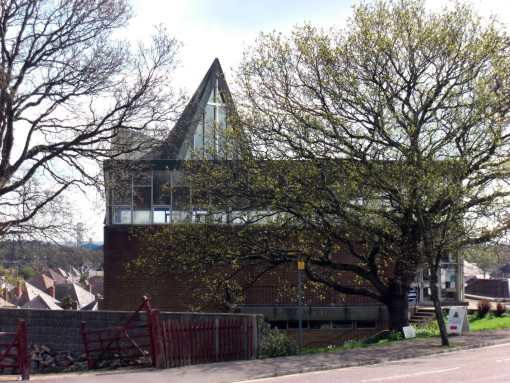 | 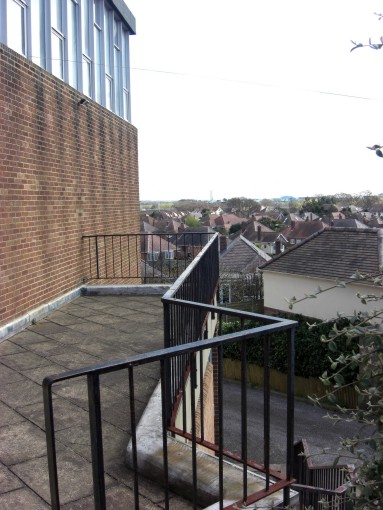 |
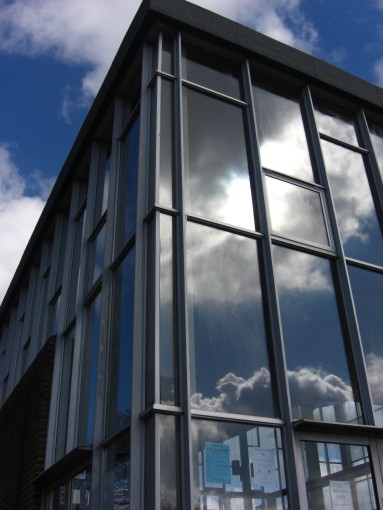 | The world penetrates the church - the church reflects the world back. And the roof swoops up and down in dramatic points, angles and edges. | 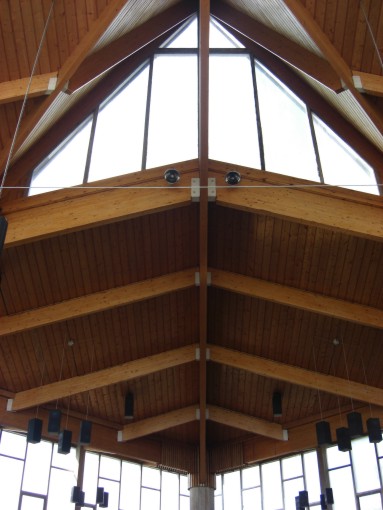 |
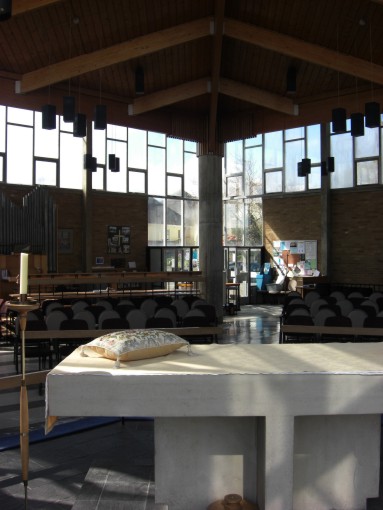 | Some of the fittings may be a bit weak, but there's nothing spindly or apologetic about the concrete font and altar - they're massive, monumental bits of kit. | 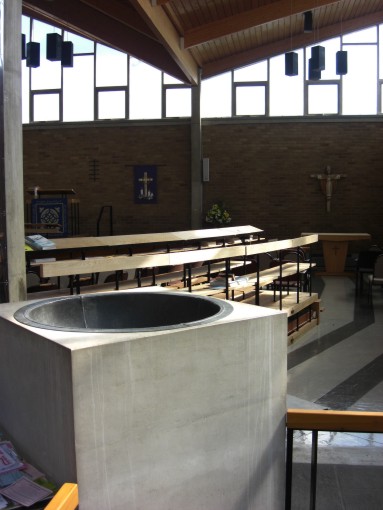 |
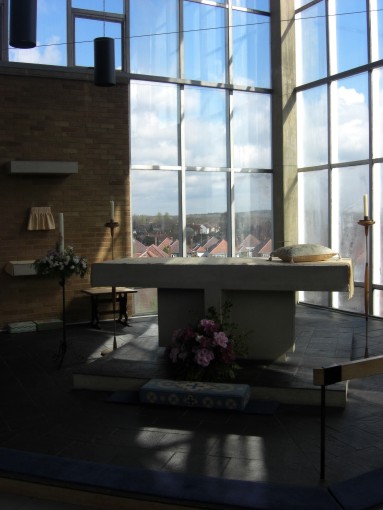 | 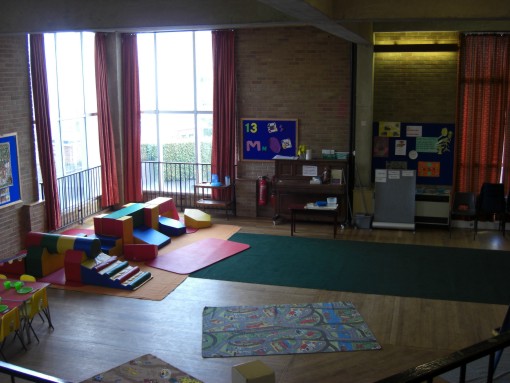 |
| Making wonderful use of the site, beneath the worship space is a beautiful hall area used for a playgroup and other activities. |
| Almost in spite of myself, I'm so very fond of this church. It seems active and lively as well as dramatically-built, too, and more (though not much) can be discovered here. |





